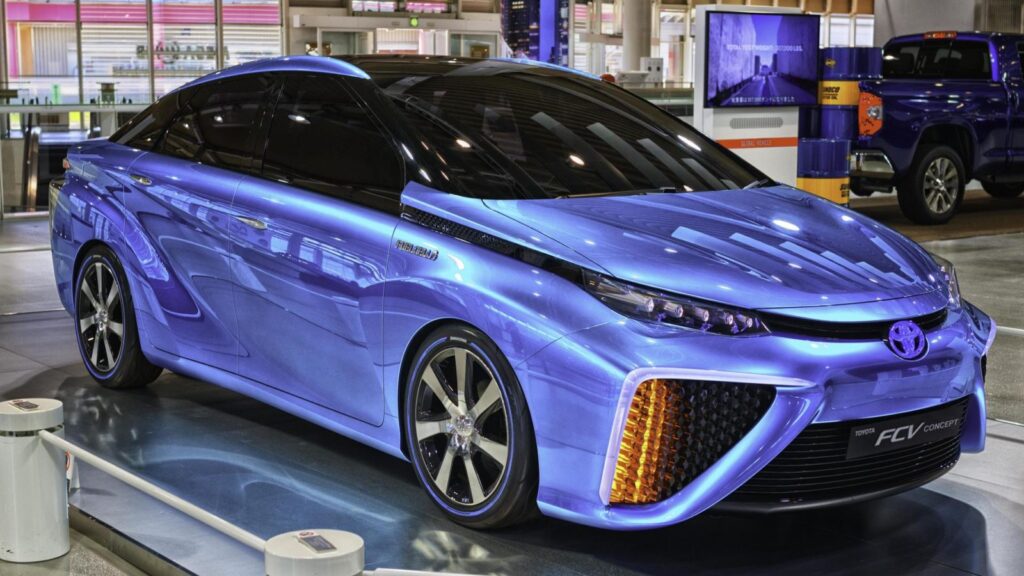In a significant leap towards sustainable transportation, Toyota unveils hydrogen car for mass production, marking a pivotal moment in the automotive industry. This innovative vehicle harnesses the power of hydrogen fuel cells, promising to deliver an eco-friendly alternative to traditional gasoline-powered cars. As the world grapples with climate change and the urgent need for cleaner energy solutions, Toyota’s commitment to hydrogen technology positions it at the forefront of the green revolution in mobility.
In the following sections, we will delve deeper into the features and benefits of Toyota’s hydrogen car, exploring how it operates and its potential impact on reducing carbon emissions. Readers will learn about the cutting-edge technology behind hydrogen fuel cells, the vehicle’s performance metrics, and the infrastructure developments necessary to support this new wave of transportation. Additionally, we will discuss the challenges and opportunities that lie ahead for hydrogen vehicles in a market increasingly dominated by electric alternatives.
Stay with us as we uncover the exciting details of Toyota’s hydrogen car, including insights from industry experts and projections for the future of hydrogen mobility. Whether you’re an automotive enthusiast, an environmental advocate, or simply curious about the latest advancements in technology, this article promises to provide valuable information and inspire a deeper understanding of the role hydrogen can play in shaping a sustainable future.
The Technology Behind Hydrogen Fuel Cells
The hydrogen fuel cell technology is at the core of Toyota’s new hydrogen car. This technology converts hydrogen gas into electricity, which powers the vehicle’s electric motor. The process emits only water vapor as a byproduct, making it an environmentally friendly alternative to traditional fossil fuels. Fuel cells operate by combining hydrogen with oxygen from the air, creating a chemical reaction that generates electricity.
One of the significant advantages of hydrogen fuel cells is their efficiency. Compared to internal combustion engines, fuel cells can convert a higher percentage of the energy stored in hydrogen into usable power. This efficiency translates into longer driving ranges and quicker refueling times, making hydrogen vehicles a practical option for consumers looking for sustainable transportation solutions.
Environmental Impact and Sustainability
Toyota’s commitment to sustainability is evident in its development of hydrogen vehicles. By utilizing hydrogen as a fuel source, the company aims to reduce greenhouse gas emissions significantly. Unlike gasoline or diesel vehicles, hydrogen cars produce zero tailpipe emissions, contributing to cleaner air and a reduction in urban pollution.
Moreover, hydrogen can be produced from various renewable sources, including water through electrolysis, biomass, and even waste materials. This versatility in production methods enhances the sustainability of hydrogen as a fuel, aligning with global efforts to transition to cleaner energy sources and combat climate change.
Market Readiness and Consumer Acceptance
The introduction of Toyota’s hydrogen car into mass production raises questions about market readiness and consumer acceptance. While hydrogen technology has been in development for years, consumer awareness and understanding of hydrogen vehicles remain limited. Education and outreach will be crucial in helping potential buyers understand the benefits and practicality of hydrogen cars.
Additionally, the availability of hydrogen refueling infrastructure is a significant factor in consumer adoption. Toyota is working alongside governments and private companies to expand the network of hydrogen stations, making it easier for consumers to refuel their vehicles. As infrastructure improves, consumer confidence in hydrogen technology is likely to grow.
Comparison with Electric Vehicles
As the automotive industry shifts towards electrification, a comparison between hydrogen fuel cell vehicles and battery electric vehicles (BEVs) is essential. Both technologies aim to reduce reliance on fossil fuels, but they have distinct advantages and challenges. Hydrogen cars typically offer faster refueling times and longer ranges compared to BEVs, which can take hours to charge fully.
However, BEVs benefit from a more established charging infrastructure and a growing market presence. Consumers may prefer the convenience of charging at home, while hydrogen vehicles require access to specialized refueling stations. Understanding these differences will help consumers make informed decisions about which technology best suits their needs.
Government Policies and Incentives
Government policies play a crucial role in the adoption of hydrogen vehicles. Many countries are implementing incentives to encourage the development and purchase of hydrogen cars, including tax credits, rebates, and grants for infrastructure development. These policies aim to stimulate the market and support the transition to cleaner transportation options.
In addition to financial incentives, governments are also investing in research and development to advance hydrogen technology. Collaborative efforts between automakers, researchers, and policymakers are essential to overcoming the challenges associated with hydrogen production, storage, and distribution, ultimately leading to a more sustainable future.
Future Prospects for Hydrogen Vehicles
The future of hydrogen vehicles looks promising as technology continues to evolve. With advancements in fuel cell efficiency and hydrogen production methods, the potential for widespread adoption increases. Toyota’s commitment to hydrogen technology positions it as a leader in the market, paving the way for other manufacturers to follow suit.
As consumer awareness grows and infrastructure expands, hydrogen vehicles may become a viable alternative to traditional gasoline-powered cars. The ongoing research and development in this field will be crucial in addressing current challenges and unlocking the full potential of hydrogen as a clean energy source for transportation.
| Feature | Description |
|---|---|
| Introduction | Toyota has announced the mass production of its latest hydrogen-powered vehicle, aiming to revolutionize the automotive industry with sustainable energy solutions. |
| Technology | The new hydrogen car utilizes advanced fuel cell technology, converting hydrogen into electricity to power the vehicle, resulting in zero emissions. |
| Design | The vehicle features a sleek and modern design, emphasizing aerodynamics and efficiency, while also providing a spacious interior for passengers. |
| Performance | With a range of over 400 miles on a single tank of hydrogen, the car offers comparable performance to traditional gasoline vehicles, with quick refueling times. |
| Environmental Impact | This initiative aligns with global efforts to reduce carbon emissions and combat climate change, promoting the use of renewable energy sources. |
| Market Availability | The hydrogen car is expected to be available in select markets by the end of the year, with plans for expansion based on consumer demand. |
| Future Prospects | Toyota aims to lead the hydrogen revolution, with ongoing research and development to enhance fuel cell technology and expand the hydrogen infrastructure. |



